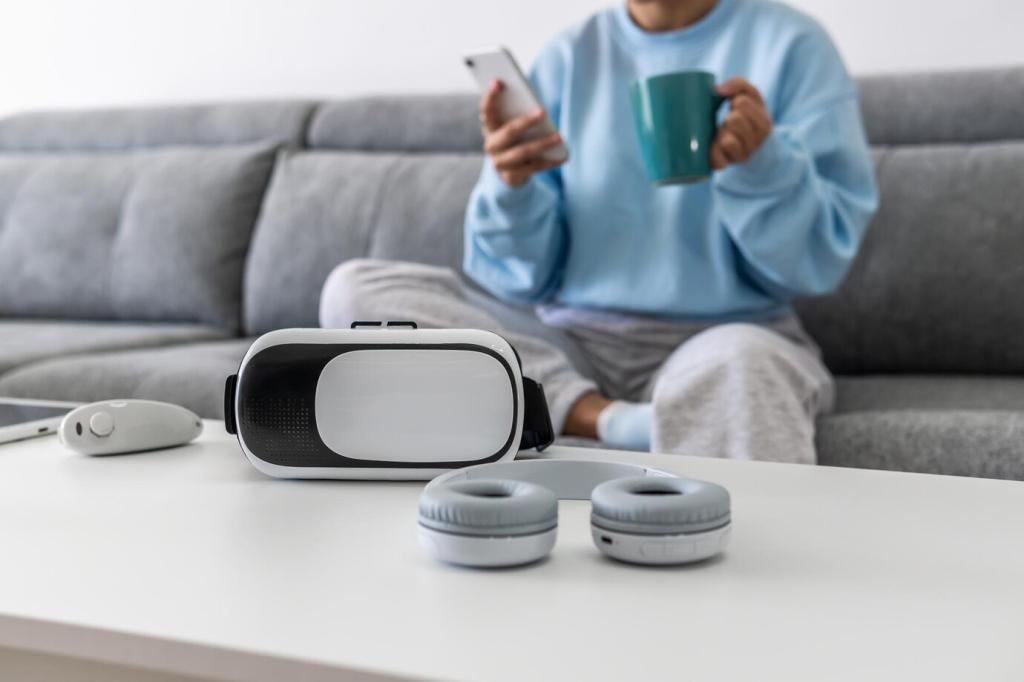
AI-Powered Wearables in Chronic Disease Management: Smarter Care, Closer to You
Today’s theme: AI-Powered Wearables in Chronic Disease Management. Welcome to a space where tiny sensors, thoughtful algorithms, and everyday routines work together to protect health. Settle in, stay curious, and share your journey—your experiences help others discover what’s possible.
Microtrends That Matter
Minute-by-minute changes in heart rate variability, glucose, and respiration reveal patterns you’d never notice alone. AI stitches these signals together, highlighting subtle shifts that suggest when to rest, refuel, hydrate, or move.
Closing the Loop with Feedback
Smart nudges only work when they arrive at the right time. Context-aware alerts adjust to your schedule, medication timing, and stress, guiding small choices that compound into steadier glucose, calmer breathing, and steadier pressure.
A Morning Saved
At 5:42 a.m., Maya’s wearable flagged a rapid glucose drop before symptoms. One snack, a brief walk, and her morning meeting went on as planned. Tiny moments like this build confidence, day after day.





Clinician Workflows that Actually Work
Triage models surface what is urgent, what can wait, and what is trending well. Color-coded risk, confidence scores, and concise narratives help teams focus attention where it truly changes outcomes.
Clinician Workflows that Actually Work
Standards-based APIs and FHIR resources keep wearable insights visible inside familiar workflows. When summaries, notes, and orders live together, adoption grows—and patients stop being messengers between disconnected systems.

Privacy, Security, and Trust
On-device processing can keep raw data local while sending only essential insights. This reduces exposure, preserves context, and makes real-time feedback snappier, even when connectivity drops or networks are unreliable.
Privacy, Security, and Trust
Granular, revisitable consent lets people choose what to share, when, and with whom. Clear language, not legalese, turns consent into informed partnership rather than a checkbox everyone forgets after setup.
Outcomes That Count
Glycemic Time-in-Range
Predictive CGM alerts and meal-activity suggestions can increase time-in-range and smooth variability. Many users report fewer surprises and calmer days, turning numbers into clearer patterns and practical adjustments that actually stick.
Hypertension Without Guesswork
Trend detection, medication reminders, and lifestyle prompts help reduce silent spikes. Morning routines, stress-aware coaching, and sleep insights together build steadier pressure profiles without overwhelming you with constant notifications.
Heart Failure at Home
Early warnings combine heart rate, activity, weight changes, and sometimes bioimpedance signals. Gentle nudges encourage diuretic timing, sodium awareness, and rest, helping catch fluid shifts before symptoms escalate into urgent care visits.
Getting Started: Your First 30 Days
Pick the Right Companion
Match device strengths to your needs—glucose, respiratory rate, blood pressure trends, or arrhythmia detection. Comfort, battery life, and data-sharing options matter as much as features you might rarely use.
Rituals Beat Willpower
Anchor checks to existing routines—after brushing teeth, before lunch, during evening wind-down. Short, consistent touchpoints help AI learn faster and reduce alert fatigue, turning monitoring into a calm daily rhythm.
Bring Your Clinician Along
Share dashboards early, agree on alert thresholds, and set follow-up cadence. Clear expectations make feedback actionable, ensuring your wearable supports the treatment plan rather than becoming another unhelpful gadget.
The Road Ahead
New modalities—sweat chemistry, cuffless blood pressure, and continuous temperature—promise richer signals. Combined with location and routine awareness, they can anticipate needs before discomfort becomes a crisis.

